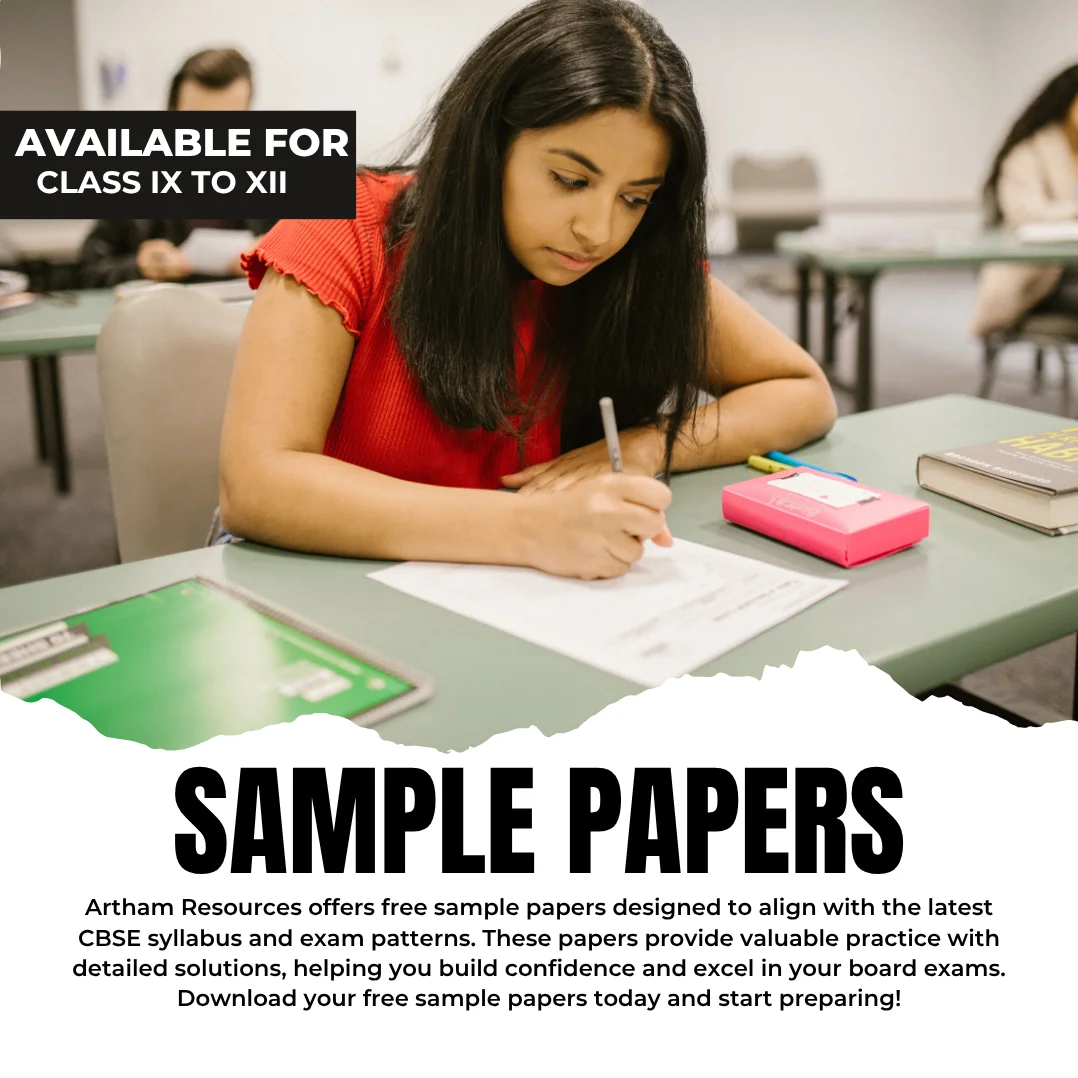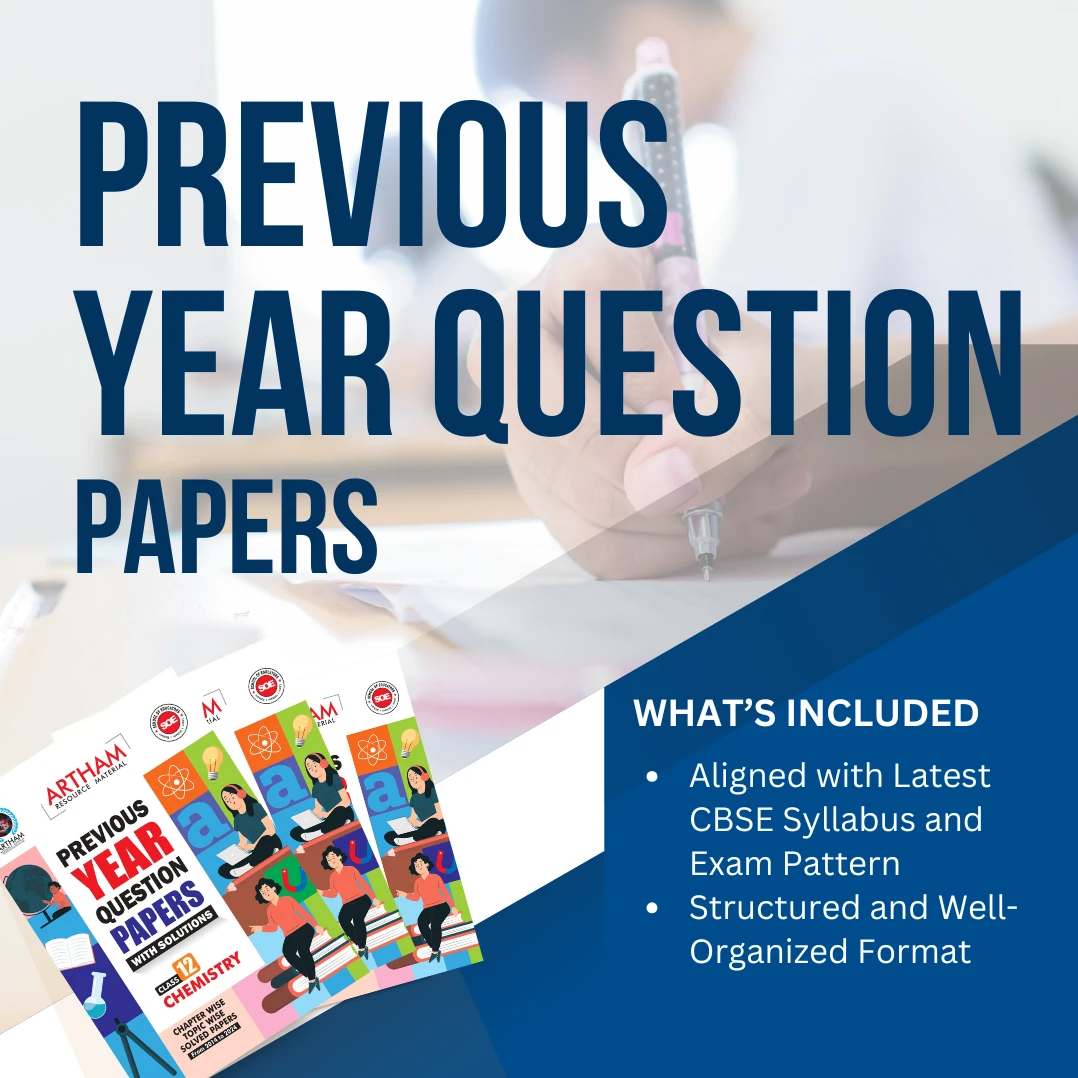Shop Left Sidebar
- CBSE
- Chapter Wise Topic Wise Notes
- Class 10
- Class 9
- Competency-Based Question Bank
- Competitive Exams & Aptitude Tests
- Comprehensive Viva Voice
- Courses
- CUET
- Daily Practice Paper (DPP)
- Diagnostic Assessment
- eBooks
- For New School
- Foundation and Olympiad Study Material
- Gift for Students
- Gift for Teachers
- Half Yearly Sample Question Paper with Solution
- Holiday Homework
- Illustrative Charts
- Journal
- Kindergarten
- Lesson Plan
- Life Skills
- Line by Line Questions
- Mind Maps
- Must Buy
- NCERT Exemplar Solutions
- NCERT Solutions
- Notes
- POWERPOINT PRESENTATIONS
- Pre Launch Stage
- Premium WhatsApp Group
- Previous Year Question Papers
- Previous Year Question Papers with Solutions
- Print version of SOP
- Sample Paper
- Sample Paper with Solutions
- Self Development
- Split -up Syllabus
- Sports and Physical Education
- Standard Operating Manuals
- Study Materials for Students
- Teachers Manual with Lesson Plans
Best seller
-
-100%
₹ 50.00Original price was: ₹ 50.00.₹ 0.00Current price is: ₹ 0.00. -
-100%
₹ 50.00Original price was: ₹ 50.00.₹ 0.00Current price is: ₹ 0.00. -
-100%
₹ 50.00Original price was: ₹ 50.00.₹ 0.00Current price is: ₹ 0.00. -
-100%
₹ 299.00Original price was: ₹ 299.00.₹ 0.00Current price is: ₹ 0.00.
- CBSE
- Chapter Wise Topic Wise Notes
- Class 10
- Class 9
- Competency-Based Question Bank
- Competitive Exams & Aptitude Tests
- Comprehensive Viva Voice
- Courses
- CUET
- Daily Practice Paper (DPP)
- Diagnostic Assessment
- eBooks
- For New School
- Foundation and Olympiad Study Material
- Gift for Students
- Gift for Teachers
- Half Yearly Sample Question Paper with Solution
- Holiday Homework
- Illustrative Charts
- Journal
- Kindergarten
- Lesson Plan
- Life Skills
- Line by Line Questions
- Mind Maps
- Must Buy
- NCERT Exemplar Solutions
- NCERT Solutions
- Notes
- POWERPOINT PRESENTATIONS
- Pre Launch Stage
- Premium WhatsApp Group
- Previous Year Question Papers
- Previous Year Question Papers with Solutions
- Print version of SOP
- Sample Paper
- Sample Paper with Solutions
- Self Development
- Split -up Syllabus
- Sports and Physical Education
- Standard Operating Manuals
- Study Materials for Students
- Teachers Manual with Lesson Plans
Showing 17–32 of 55 results
-
-62%
Lesson Plan Class 8 Science Chapter 4 Combustion And Flame
₹ 50.00Original price was: ₹ 50.00.₹ 19.00Current price is: ₹ 19.00.This lesson plan for Class 8 Science focuses on Chapter 4, Combustion and Flame, aiming to deepen students’ understanding of the processes of combustion, its types, and its significance. The plan integrates interactive activities to illustrate the concepts of combustion and flame, including demonstrations of different types of flames and their characteristics. Practical experiments are included to explore factors affecting combustion and safety measures associated with handling fire.
-
-62%
Lesson Plan Class 8 Science Chapter 5 Conservation of Plants And Animals
₹ 50.00Original price was: ₹ 50.00.₹ 19.00Current price is: ₹ 19.00.This lesson plan for Class 8 Science focuses on Chapter 5: Conservation of Plants and Animals, aiming to educate students on the importance of biodiversity preservation and sustainable practices. The plan integrates interactive activities like group discussions, case studies on endangered species, and field trips to local ecosystems. Students will explore the role of conservation in maintaining ecological balance and human well-being.
-
-62%
Lesson Plan Class 8 Science Chapter 6 Reproduction In Animals
₹ 50.00Original price was: ₹ 50.00.₹ 19.00Current price is: ₹ 19.00.The lesson plan for Class 8 Science Chapter 6, “Reproduction in Animals,” aims to provide a comprehensive understanding of the biological processes involved in the reproduction of animals. This chapter introduces students to the fundamental concepts of sexual and asexual reproduction, including the various stages and types of reproduction in different animal species. The lesson plan is designed to engage students through interactive activities, visual aids, and practical examples to help them grasp the significance of reproduction in maintaining animal populations.
-
-62%
Lesson Plan Class 8 Science Chapter 7 Reaching The Age of Adolescence
₹ 50.00Original price was: ₹ 50.00.₹ 19.00Current price is: ₹ 19.00.The lesson plan for Class 8 Science Chapter 7, “Reaching The Age of Adolescence,” focuses on guiding students through the physical and emotional changes that occur during adolescence. This chapter covers key topics such as the onset of puberty, hormonal changes, secondary sexual characteristics, and the significance of a balanced diet and personal hygiene during adolescence.
-
-62%
Lesson Plan Class 8 Science Chapter 8 Force And Pressure
₹ 50.00Original price was: ₹ 50.00.₹ 19.00Current price is: ₹ 19.00.This lesson plan for Class 8 Science, Chapter 8, “Force and Pressure,” is designed to provide students with a comprehensive understanding of the fundamental concepts of force and pressure. The lesson begins with an engaging introduction to the topic, explaining the definitions of force and pressure, and their everyday applications. Through interactive discussions, demonstrations, and hands-on activities, students explore various types of forces, such as gravitational, frictional, and magnetic forces.
-
-62%
Lesson Plan Class 8 Science Chapter 9 Friction
₹ 50.00Original price was: ₹ 50.00.₹ 19.00Current price is: ₹ 19.00.This lesson plan for Class 8 Science Chapter 9 on Friction is designed to provide students with a comprehensive understanding of the concept of friction. The lesson begins with an introduction to friction, explaining its definition and types, including static, sliding, and rolling friction. Students will learn about the causes and effects of friction, as well as its advantages and disadvantages in daily life. Through interactive activities, experiments, and real-life examples, the lesson aims to illustrate how friction affects motion and energy.
-
-62%
Lesson Plan Class 8 Science Chapter 10 Sound
₹ 50.00Original price was: ₹ 50.00.₹ 19.00Current price is: ₹ 19.00.The Lesson Plan for Class 8 Science Chapter 10: “Sound” focuses on imparting a thorough understanding of sound, its production, and propagation. Students will explore various sources of sound, the nature of sound waves, and the mediums through which sound travels. The lesson covers key concepts such as frequency, amplitude, pitch, and loudness. Through engaging activities and experiments, students will learn about the speed of sound in different media, the reflection and absorption of sound, and how humans perceive sound.
-
-62%
Lesson Plan Class 8 Science Chapter 11 Chemical Effects of Electric Current
₹ 50.00Original price was: ₹ 50.00.₹ 19.00Current price is: ₹ 19.00.This lesson plan for Class 8 Science, Chapter 11 (“Chemical Effects of Electric Current”), aims to engage students in understanding how electricity can cause chemical changes. The lesson begins with a brief introduction to electric current and its basic concepts. Students then explore electrolysis, learning about the decomposition of substances through the application of electric current.
-
-62%
Lesson Plan Class 8 Science Chapter 12 Some Natural Phenomena
₹ 50.00Original price was: ₹ 50.00.₹ 19.00Current price is: ₹ 19.00.This lesson plan for Class 8 Science focuses on Chapter 12: Some Natural Phenomena. Students will explore various natural phenomena such as lightning, earthquakes, and storms, emphasizing their causes, effects, and safety measures. The lesson includes interactive activities to demonstrate static electricity, discussions on the formation of lightning and thunder, and simulations to understand earthquake waves.
-
-62%
Lesson Plan Class 8 Science Chapter 13 Light
₹ 50.00Original price was: ₹ 50.00.₹ 19.00Current price is: ₹ 19.00.In this lesson plan for Class 8 Science, Chapter 13 focuses on the topic of Light. Students will explore the fundamental properties of light, including reflection, refraction, and dispersion. The lesson aims to engage students through hands-on activities such as experiments with mirrors and lenses to understand how light behaves. Key concepts include the formation of shadows, the laws of reflection, and the phenomenon of dispersion through prisms.
-
-62%
Lesson Plan Class 8 Social Science (Civics) Chapter 1 The Indian Constitution
₹ 50.00Original price was: ₹ 50.00.₹ 19.00Current price is: ₹ 19.00.This lesson plan for Class 8 Social Science (Civics), focusing on Chapter 1 – The Indian Constitution, aims to introduce students to the foundational principles and structure of India’s governing document. Through interactive activities, discussions, and multimedia resources, students will explore the Preamble, fundamental rights, and duties enshrined in the Constitution.
-
-62%
Lesson Plan Class 8 Social Science (Civics) Chapter 2 Understanding Secularism
₹ 50.00Original price was: ₹ 50.00.₹ 19.00Current price is: ₹ 19.00.This lesson plan for Class 8 Social Science (Civics) Chapter 2, “Understanding Secularism,” focuses on exploring the concept of secularism within the Indian context. Students will delve into the principles of secularism as enshrined in the Indian Constitution, understanding its significance in fostering religious harmony and equality among citizens. The lesson includes interactive activities to analyze case studies of secular practices in India and globally, encouraging critical thinking and discussion on the challenges and benefits of secularism in a diverse society.
-
-62%
Lesson Plan Class 8 Social Science (Civics) Chapter 3 Parliament and the Making of Laws
₹ 50.00Original price was: ₹ 50.00.₹ 19.00Current price is: ₹ 19.00.This lesson plan for Class 8 Social Science (Civics), focusing on Chapter 3: Parliament and the Making of Laws, aims to provide students with a comprehensive understanding of the legislative process in India. Through interactive activities, discussions, and visual aids, students will explore the roles and functions of the Parliament, understanding its composition, powers, and the significance of lawmaking in a democratic setup.
-
-62%
Lesson Plan Class 8 Social Science (Civics) Chapter 4 Judiciary
₹ 50.00Original price was: ₹ 50.00.₹ 19.00Current price is: ₹ 19.00.Explore the intricacies of the judicial system with this engaging lesson plan for Class 8 Social Science (Civics). Students will delve into Chapter 4: Judiciary, understanding the role and functions of the judiciary in upholding justice and interpreting laws. The lesson plan includes interactive activities to help students grasp the structure of courts, the significance of the rule of law, and the principles of justice.
-
-62%
Lesson Plan Class 8 Social Science (Civics) Chapter 5 Understanding Marginalisation
₹ 50.00Original price was: ₹ 50.00.₹ 19.00Current price is: ₹ 19.00.This lesson plan for Class 8 Social Science (Civics), Chapter 5 “Understanding Marginalisation,” aims to deepen students’ understanding of social exclusion and marginalization in society. Through interactive activities, case studies, and group discussions, students will explore the causes, consequences, and manifestations of marginalization across different communities.
-
-62%
Lesson Plan Class 8 Social Science (Civics) Chapter 6 Confronting Marginalisation
₹ 50.00Original price was: ₹ 50.00.₹ 19.00Current price is: ₹ 19.00.This lesson plan for Class 8 Social Science (Civics) Chapter 6, “Confronting Marginalisation,” focuses on understanding the concept of marginalisation in society. Students will explore various forms of marginalisation such as caste, gender, and economic disparities, analyzing their impact on individuals and communities. The lesson encourages critical thinking through case studies and discussions on strategies for confronting marginalisation, promoting empathy and social justice awareness among students.
Teaching is one of the hardest and most important jobs in the world. We provide the support that teachers need to transform their subjects into terms that their students will understand.
- Nageen International
- B-162, 4th Floor, DDA Shed, Okhla Industrial Area Phase 1 New Delhi-110020 (India)
- WhatsApp us at +91-95208-11111
- Email: info@educatorsresource.in
- (Monday to Saturday) WhatsApp 24*7
2025 Educator Resources. All Rights Reserved.




